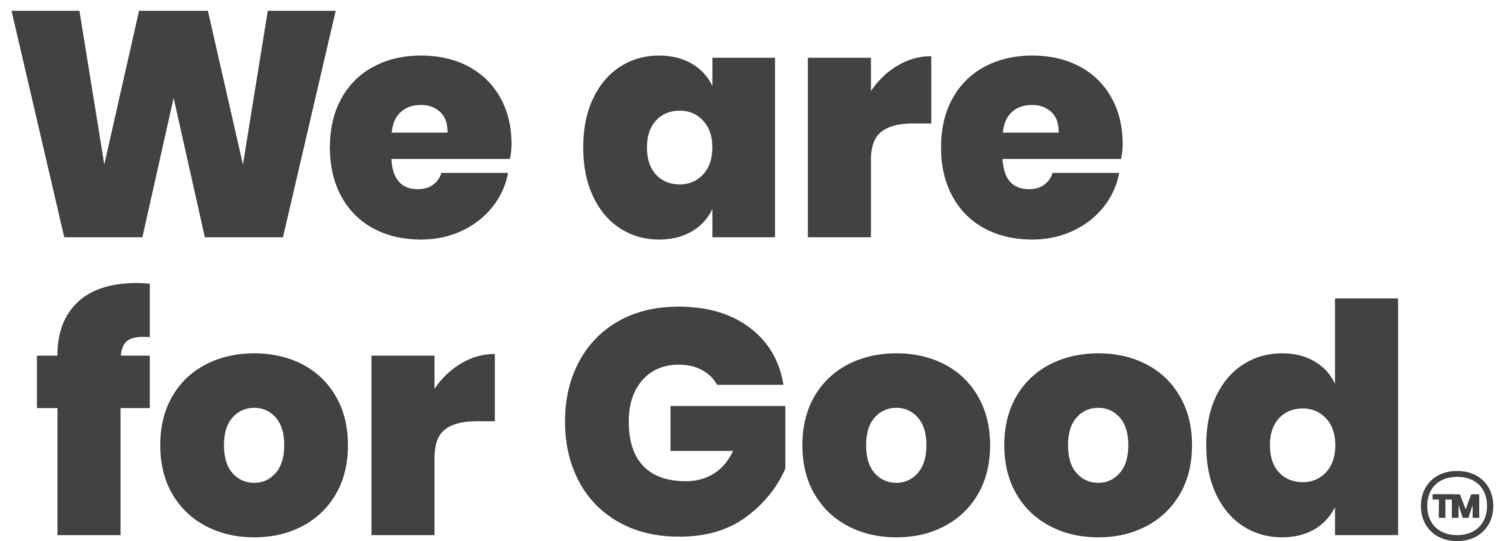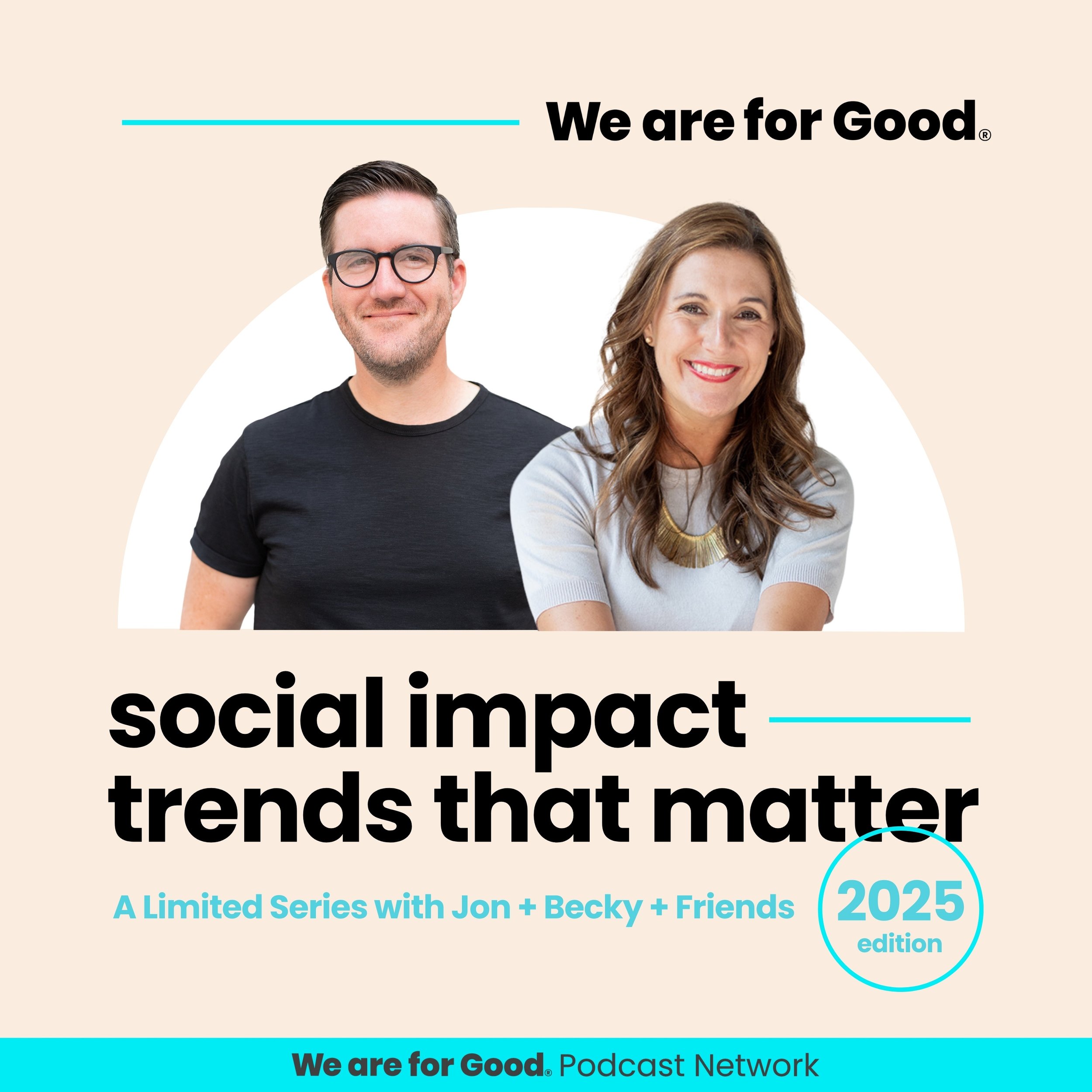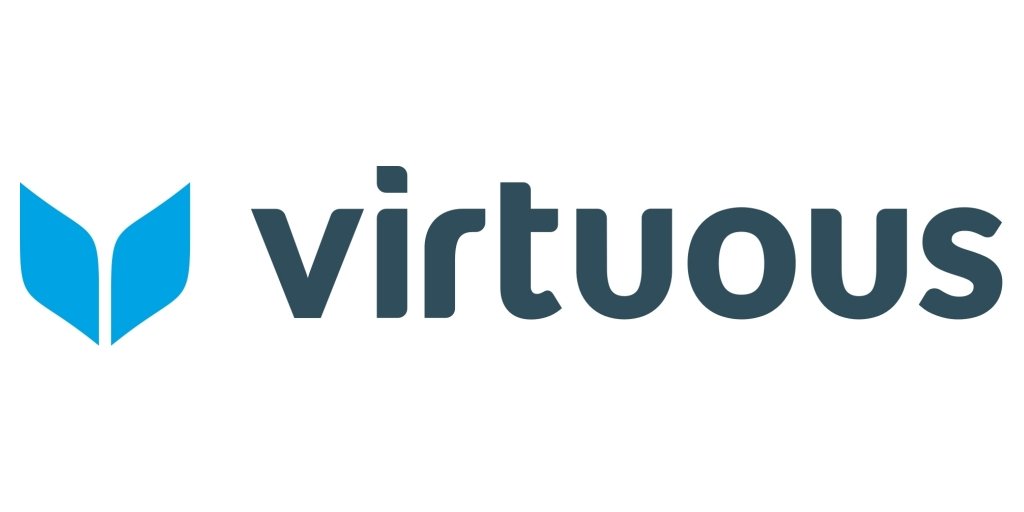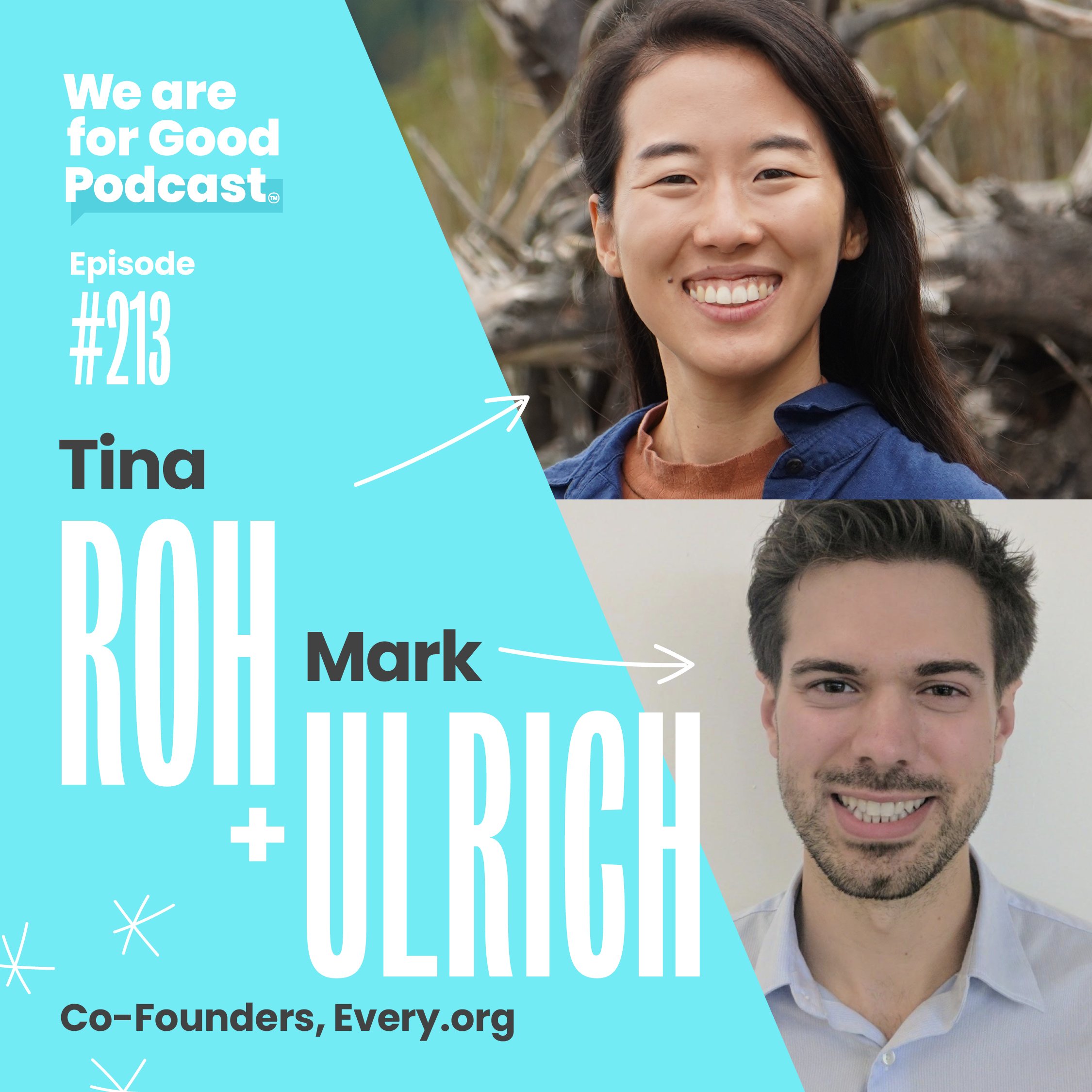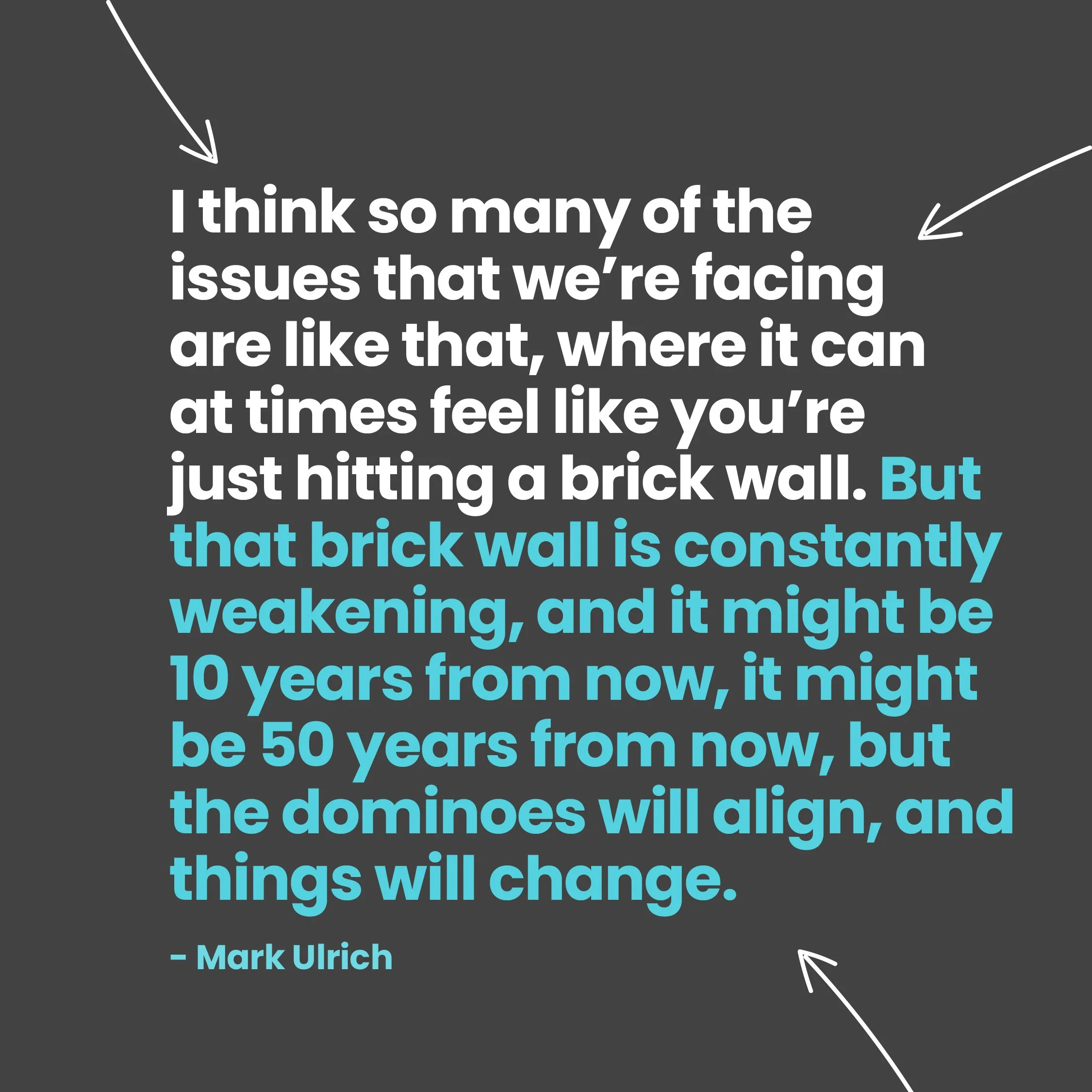213. Making Tech Accessible for Every Nonprofit - Tina Roh and Mark Ulrich
Listen to this episode
Overview
Meet Tina and Mark. These two Stanford classmates helped build Snap and Pinterest, then left the for-profit tech world behind to launch a groundbreaking social giving platform, Every.org - it's a nonprofit making giving accessible for all nonprofits 🎉
Today’s Guest
Mark Ulrich and Tina Roh, CEO and COO, every.org
“I’m just in awe of how much generosity there is. It also shows a lot more generosity can be unlocked by having the right tools available to both the givers and nonprofits.”
Episode Transcript
Download Full Episode Transcript Here
Episode highlights
Tina and Mark’s stories and journeys to where they are today (2:50)
What the journey of starting every.org has looked like for their team and what they have learned along the way (7:00)
An overview of every.org (9:00)
Barriers nonprofits are facing today (12:00)
Leveraging the technology on their platform (17:00)
The power of social giving (28:00)
A powerful moment of philanthropy in Tina’s life (32:00)
A powerful moment of philanthropy in Mark’s life (34:00)
Mark’s One Good Thing: Support each other and honor our commitments. (37:00)
Tina’s One Good Thing: Advance communal wisdom and learn from experts. (38:00)
Powerful quotes
“What I found was that oftentimes, especially if you're making more complex, like donations of stock, that nonprofits often like didn't have a great answer for how I should make that donation.” -Mark
“Nonprofits are really at the root of why I'm successful today. I've benefited a lot from the local food banks and need based scholarships like QuestBridge.” -Tina
“After my initial stint at Snapchat, learning the technology, learning how technology really scales impact whatever is at the root. And if you're thoughtless, about what you are scaling, then it can have a huge impact.” -Tina
“After we talked to more nonprofits of what they needed from technology, like everything that Mark said, that became very clear, and it was a problem that we could solve, as well as tried to bring what we learned from the companies that we worked at in the past and build an accessible giving infrastructure, and build this community of givers and nonprofits.” -Tina
“A lesson that I constantly learn is how technology like we are here to learn from the community and the experts. We are trying to apply technology to whatever benefits the community the most. So we are constantly learning and changing maybe the approach that we are applying technology, or changing the feature set that we are focusing on next, based on what we are hearing from our nonprofit partners.” -Tina
“Technology is an amplifier, but we just have to be super tuned into the community and listen to what they need.” -Tina
“Technology is always changing. There's always something new, and donors are very quick to jump on the latest trends. Oftentimes, it's just a lot of work for nonprofits to catch up and figure out all these different methods one by one by one, and there's no reason to be doing that on your own.” -Mark
“So what we want to do is be there for you. Next year, something else will come along, and we'll have your back. We'll be adding that to the platform so that you can focus on your mission, your storytelling, your own community, and your own clients. And we can handle the technical pieces for you.” -Mark
“The common thing was that tech is difficult, and it's expensive. A lot of people, a lot of nonprofits, both small and large, are paying a lot of money for technology.” -Tina
“One of the conversations that we have as co founders is that tech should be much cheaper. Now servers are cheaper. I think it costs a lot to build, but to maintain server costs are cheaper than ever. And I think it would make a more equitable world if we are able to create technology that could be free for nonprofits.” -Tina
“So nonprofits who use every.org’s, free open source, donate button, get all of these learnings for free and the features are going to continuously evolve as donors are adapting new practices.” -Tina
“We want to make sure that both the experience for nonprofits, and the givers are optimized for this and going forward can adapt to an evolving landscape.” -Tina
“If you go to every.org/nonprofits, you can actually go and claim your profile, and get instant access to all that donor information.” -Mark
“Not only are we saving you time from a technical perspective, but also from a regulatory perspective. You know, we're the ones who send donors their tax receipt, we're the ones who report the 8282 to the IRS, we're the ones who adjust our 990. And you actually just get a US dollar grant from every.org that next Monday.” -Mark
“I’m just in awe of how much generosity there is. It also shows a lot more generosity can be unlocked by having the right tools available to both the givers and nonprofits.” -Tina
“I think it already is happening with a lot of young people. Where giving is a more important part of your life and where you know that you're probably not going to get happiness and fulfillment through greater consumerism. Studies have shown that you actually can get that through giving. It does improve people's health, it does improve people's happiness, it does improve people's connection to their community. So my hope is that more and more people know that and more people experienced that.” -Mark
“I think there's kind of two sides of it. When we think about the amount of donations, one is all these incredible missions that need the funding and are getting it. Then the second is all of these people who are now more aware who are happier, who are more connected to the world and to the community through this act of generosity, whether that's because they started a fundraiser or they were able to make a donation themselves.” -Mark
“I saw some stat about millennials and how they make financial decisions through social media, a majority of them.” -Tina
“Nearly 9 in 10, millennials say charitable giving is an important part of their lives, compared to 74% of the total population. And then three out of four Millennials consider themselves philanthropist compared to 45% of the total population. So I think the thought of philanthropy as only for wealthy donors is shifting and people are giving their time their voice.” -Tina (Fidelity Charitable)
“Right now we're focusing on finances and money. Because when we ask nonprofits, they're like, number one thing is I need more, we need more money to execute our mission. So yeah, I think it'll be really awesome to grow generosity and make it contagious.” -Tina
“I think a lot about this these days where the world is so interconnected in ways that we don't see. And to be able to contribute just a little bit to heal a part of that, like, whatever intergenerational trauma that we are carrying or traumas that we are creating for ourselves to heal a bit of that. I think it's, it's so empowering for me that we can do something in this world.” -Tina
“I think so many of the issues that we're facing are like that, where it can at times feel like you're just hitting a brick wall. But that brick wall is constantly weakening, and it might be 10 years from now, it might be 50 years from now, but the dominoes will align, and things will change.” -Mark
“If you do your best, and you work for positive change, yeah, maybe you won't be alive to see it. But hopefully you will. And things things do add up.” -Mark
Connect with Mark
Connect with Tina
Rate, Review, & Follow on Apple Podcasts
Are you a fan of the We Are For Good Podcast? Please consider rating and reviewing our show! This helps us serve more do-gooders — just like you — grow their own impact uprising.
First time doing reviewing a podcast? Don’t sweat - it’s super easy! Click here, scroll to the bottom, tap to rate the show with stars, and then click “Write a Review.” We’d love to hear what you loved most about this episode!
While you’re there, if you haven’t done so already, would you consider subscribing to the podcast? We curate inspiring conversations weekly to help you do more for your mission (and the occasional surprise minisode too!) and if you’re not subscribed, you could totally out. Subscribe now!
Join the Good Community!
The We are for good community
This is a safe place for deeper conversations. While we love this podcast, it is a very one-sided dialogue. It is great for starting conversations, but not continuing them. You can find friends, colleagues, and others to champion alongside. We believe community is everything and we wanted to create a place where people could learn and thrive and grow together (and also have a whole lot of fun).
